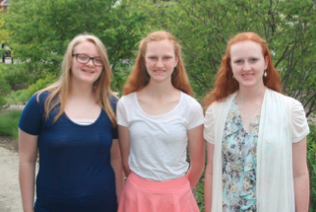2016, CINCINNATI, OH, UNITED STATES

In the winter, Oak Hills High School uses a lot of road salt to de-ice the surrounding pavement surfaces. Bridget Kallmeyer, Erin Kallmeyer, and Lindsey Lawrence found this unnecessary, as more salt than needed was being used, and was running off into the Stormwater collection system that flowed into nearby waterways. To combat some of the excess salt use, the group came up with a plan to replace the salt used in the student parking lot with sand.
The project would first only cover ¼ of the student lot due to concerns from the building manager, but if it goes well, more of the space can begin to use sand. Additionally, the custodial staff will be educated on the use of sand and why using too much salt can be detrimental to the waterways.
Sand would potentially decrease the amount of money that is spent on salt annually, and provides traction and works in all temperatures. However, since sand does not melt snow, it would require more applications in order to keep students safe. If the implementation is successful, Oak Hills would be saving money and protecting their nearby waterways!










